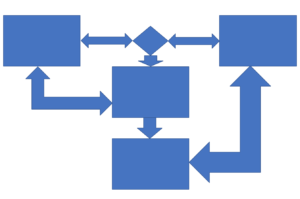4FAD: A framework for mapping the evolution of artefacts in the learning design process
 A number of researchers have explored the role and nature of design in education, proposing a diverse array of life cycle models. Design plays subtly different roles in each of these models. The learning design research community is shifting its attention from the representation of pedagogical plans to considering design as an ongoing process. As a result, the study of the artefacts generated and used by educational designers is also changing: from a focus on the final designed artefact (the product of the design process) to the many artefacts generated and used by designers at different stages of the design process (e.g., sketches, reflections, drawings, or pictures). However, there is still a dearth of studies exploring the evolution of such artefacts throughout the learning design life cycle. A deeper understanding of these evolutionary processes is needed – to help smooth the transitions between stages in the life cycle. In this paper, we introduce the four-dimensional framework for artefacts in design (4FAD) to generate understanding and facilitate the mapping of the evolution of learning design artefacts. We illustrate the value of the framework by applying it in the analysis of an authentic design case.
A number of researchers have explored the role and nature of design in education, proposing a diverse array of life cycle models. Design plays subtly different roles in each of these models. The learning design research community is shifting its attention from the representation of pedagogical plans to considering design as an ongoing process. As a result, the study of the artefacts generated and used by educational designers is also changing: from a focus on the final designed artefact (the product of the design process) to the many artefacts generated and used by designers at different stages of the design process (e.g., sketches, reflections, drawings, or pictures). However, there is still a dearth of studies exploring the evolution of such artefacts throughout the learning design life cycle. A deeper understanding of these evolutionary processes is needed – to help smooth the transitions between stages in the life cycle. In this paper, we introduce the four-dimensional framework for artefacts in design (4FAD) to generate understanding and facilitate the mapping of the evolution of learning design artefacts. We illustrate the value of the framework by applying it in the analysis of an authentic design case.







